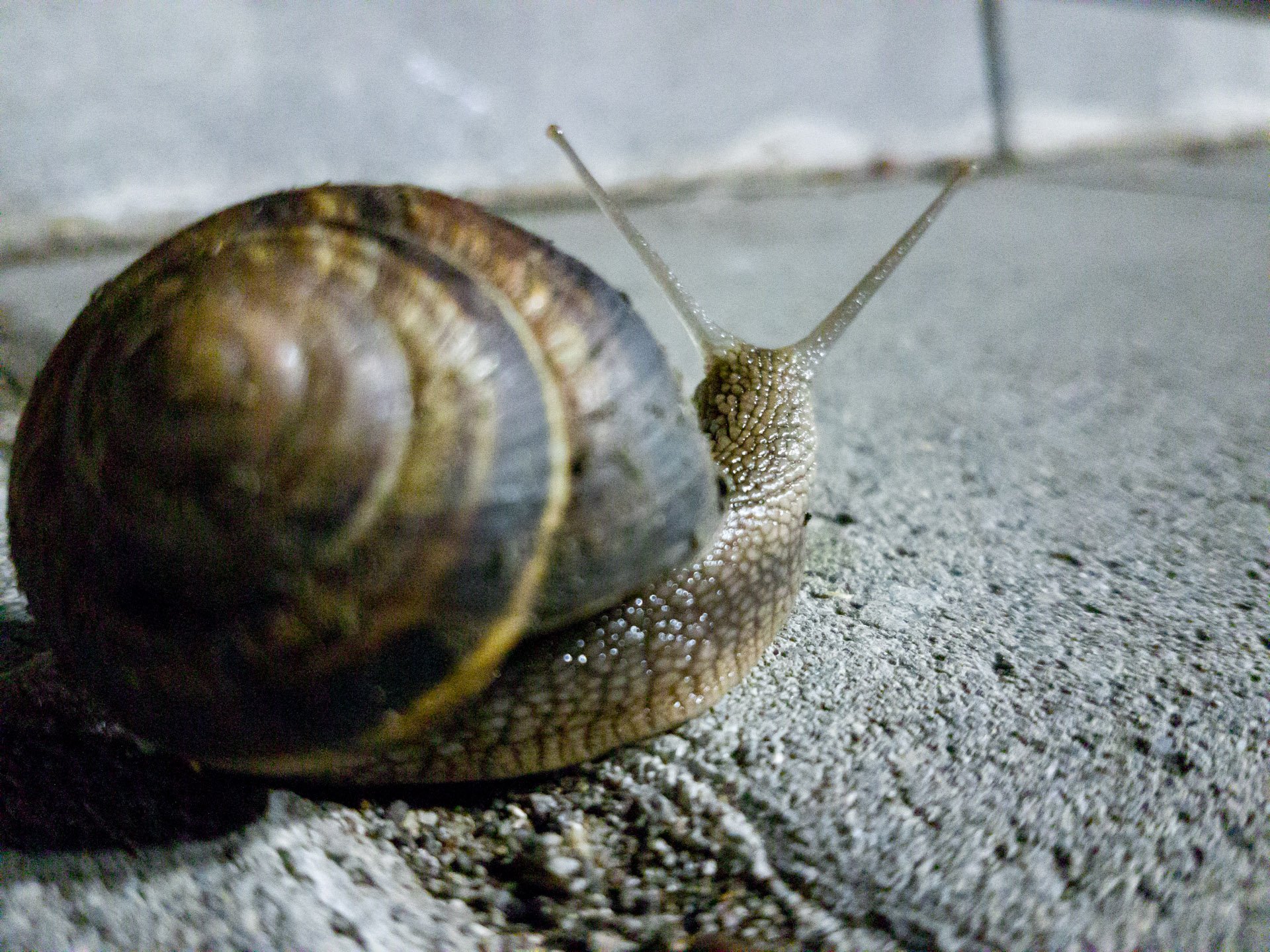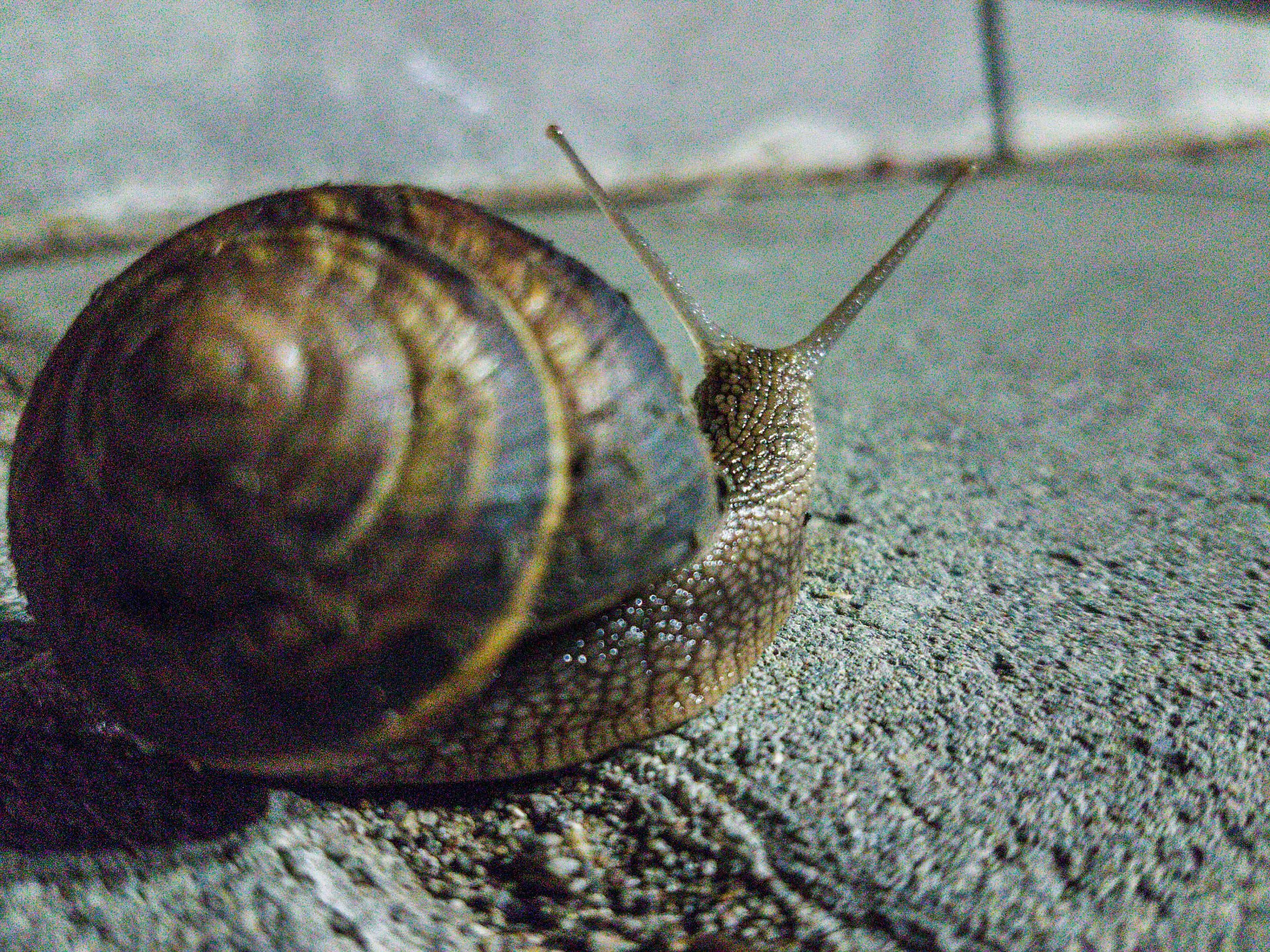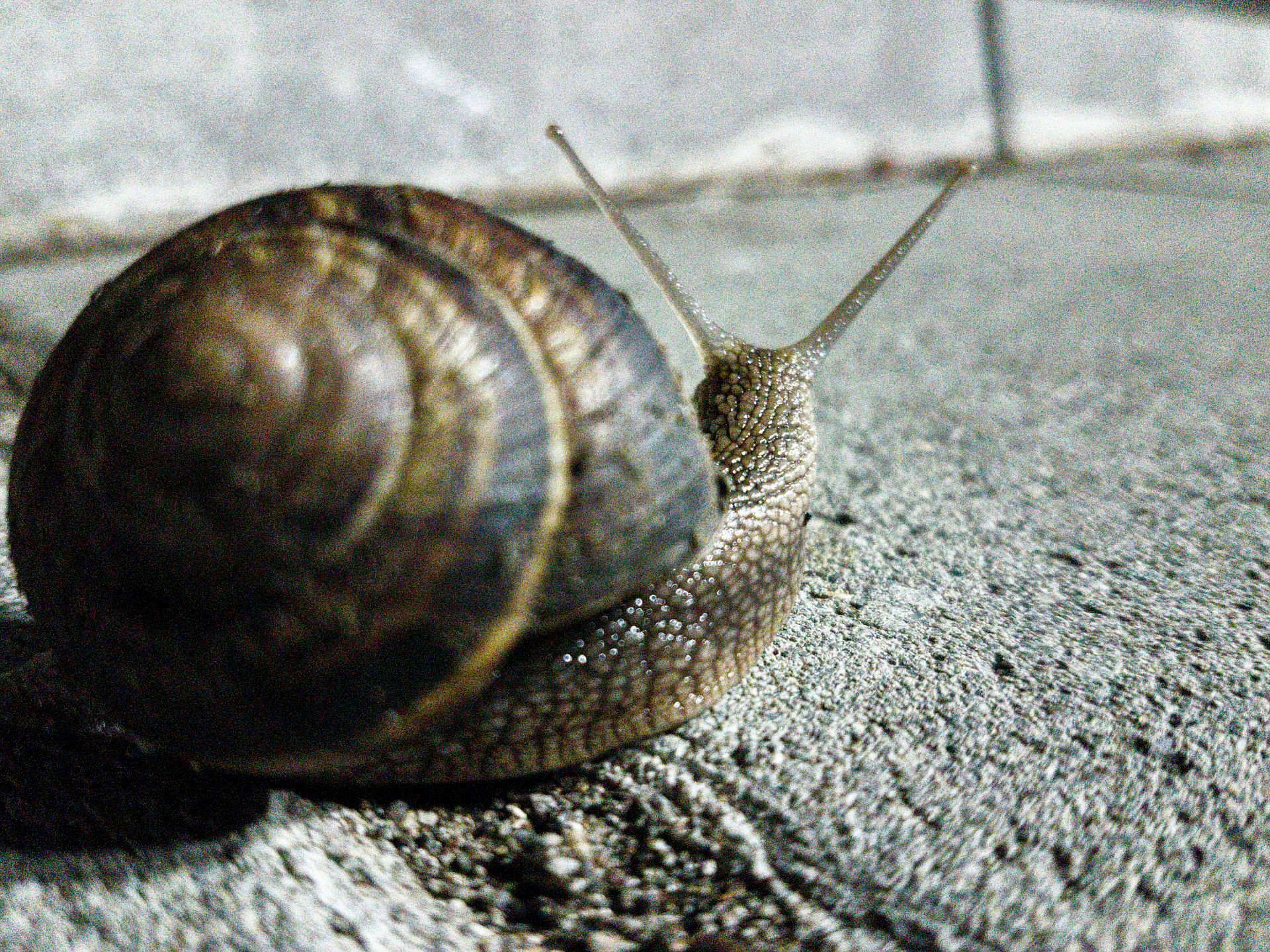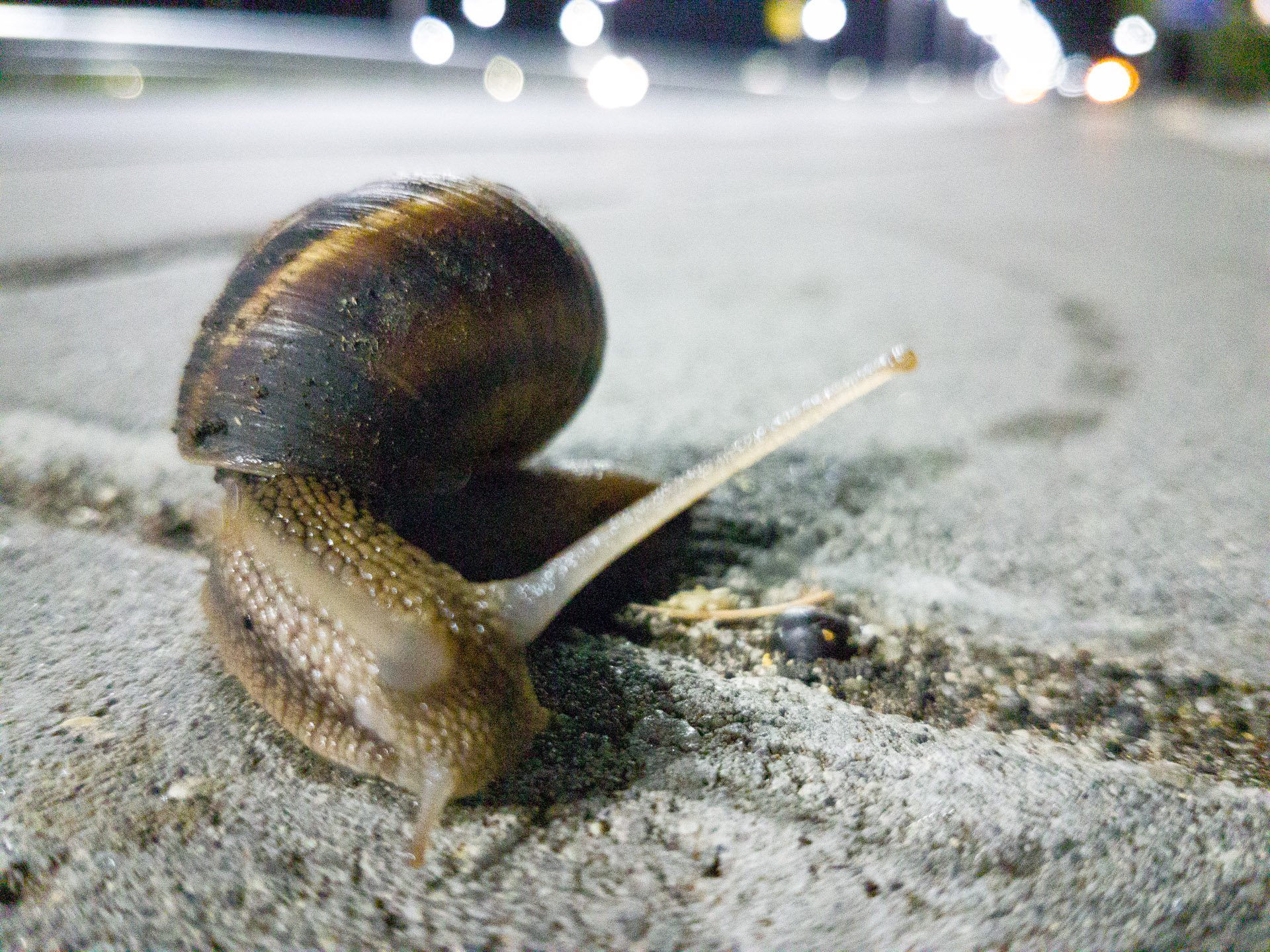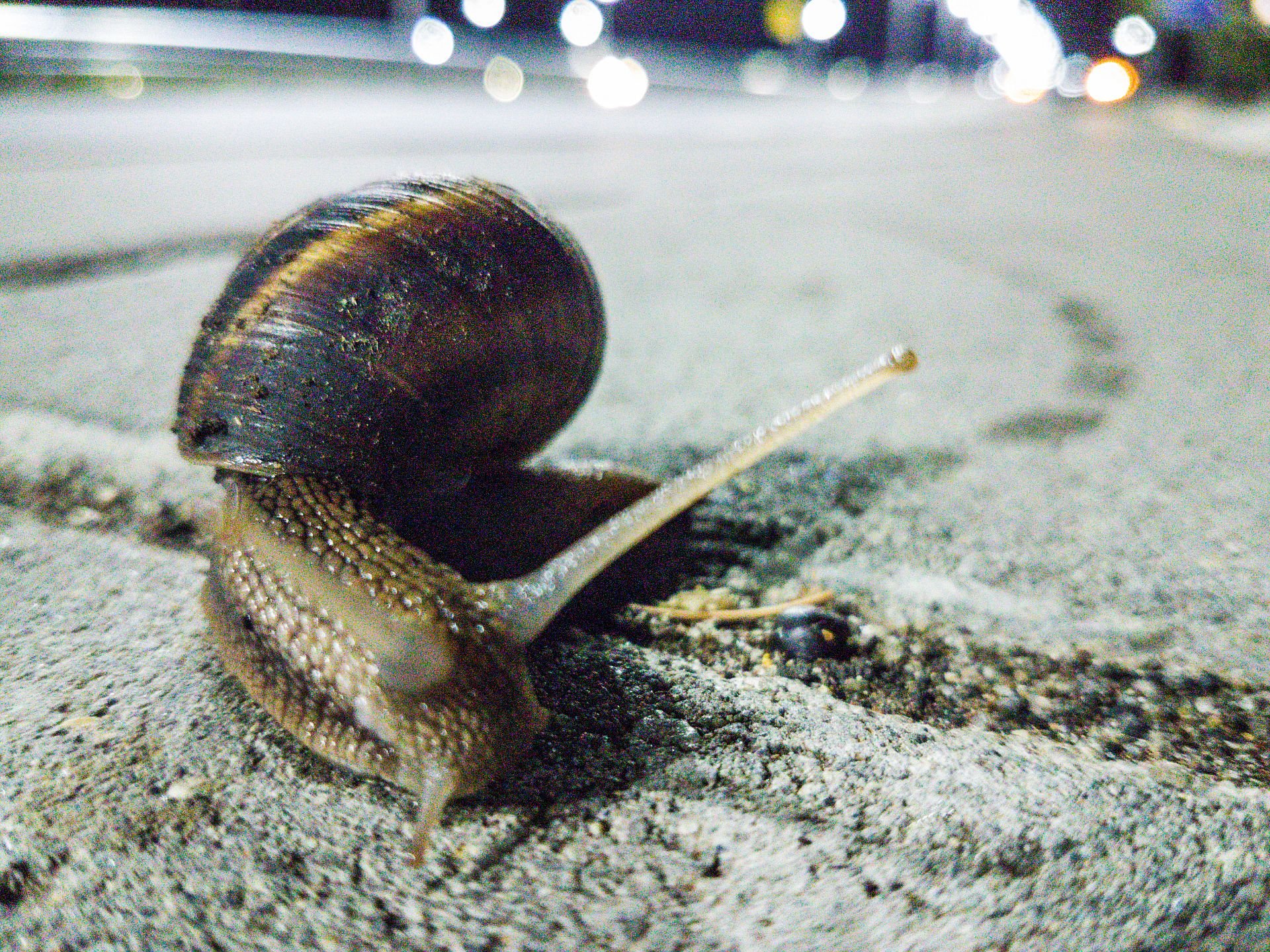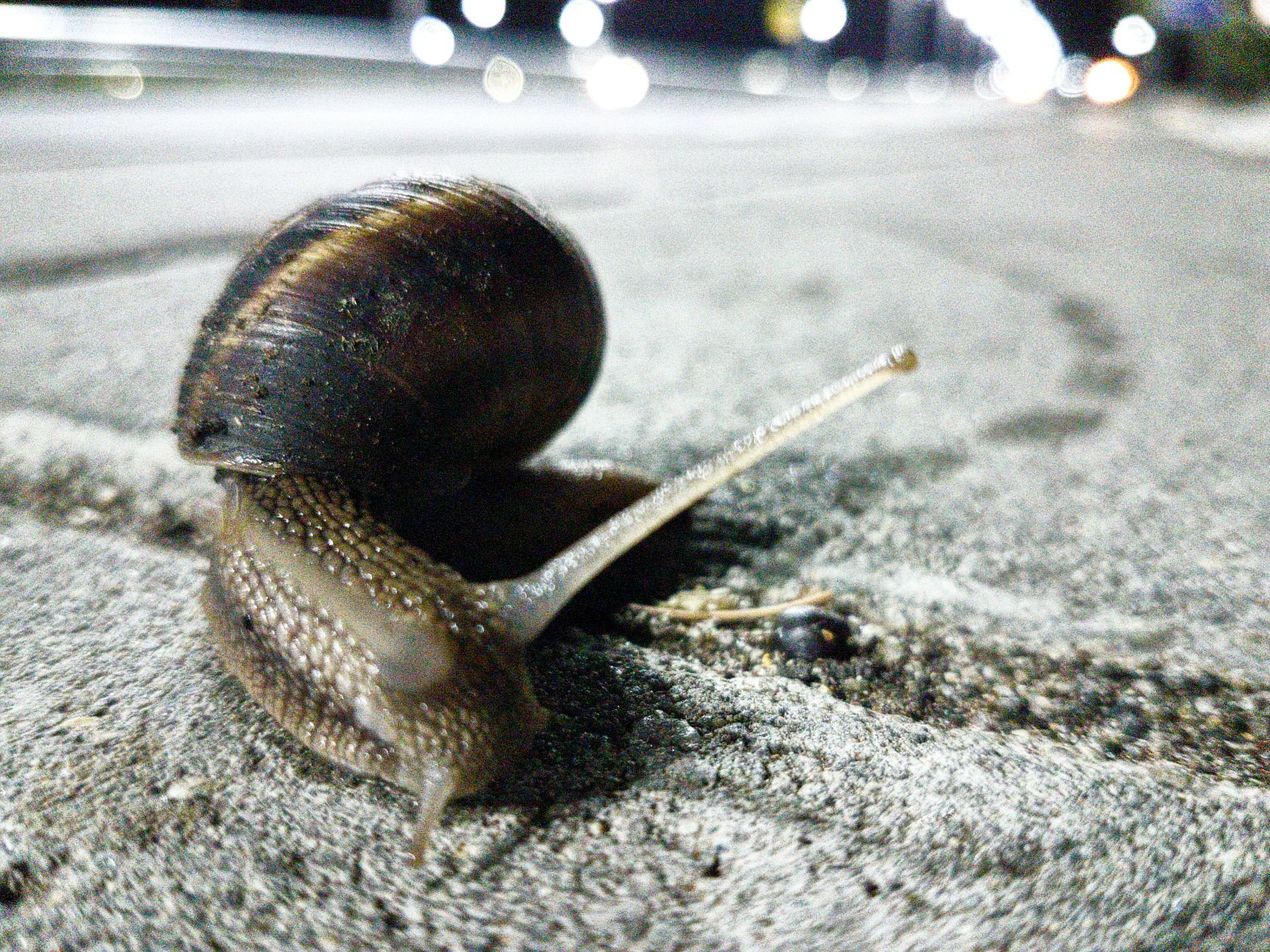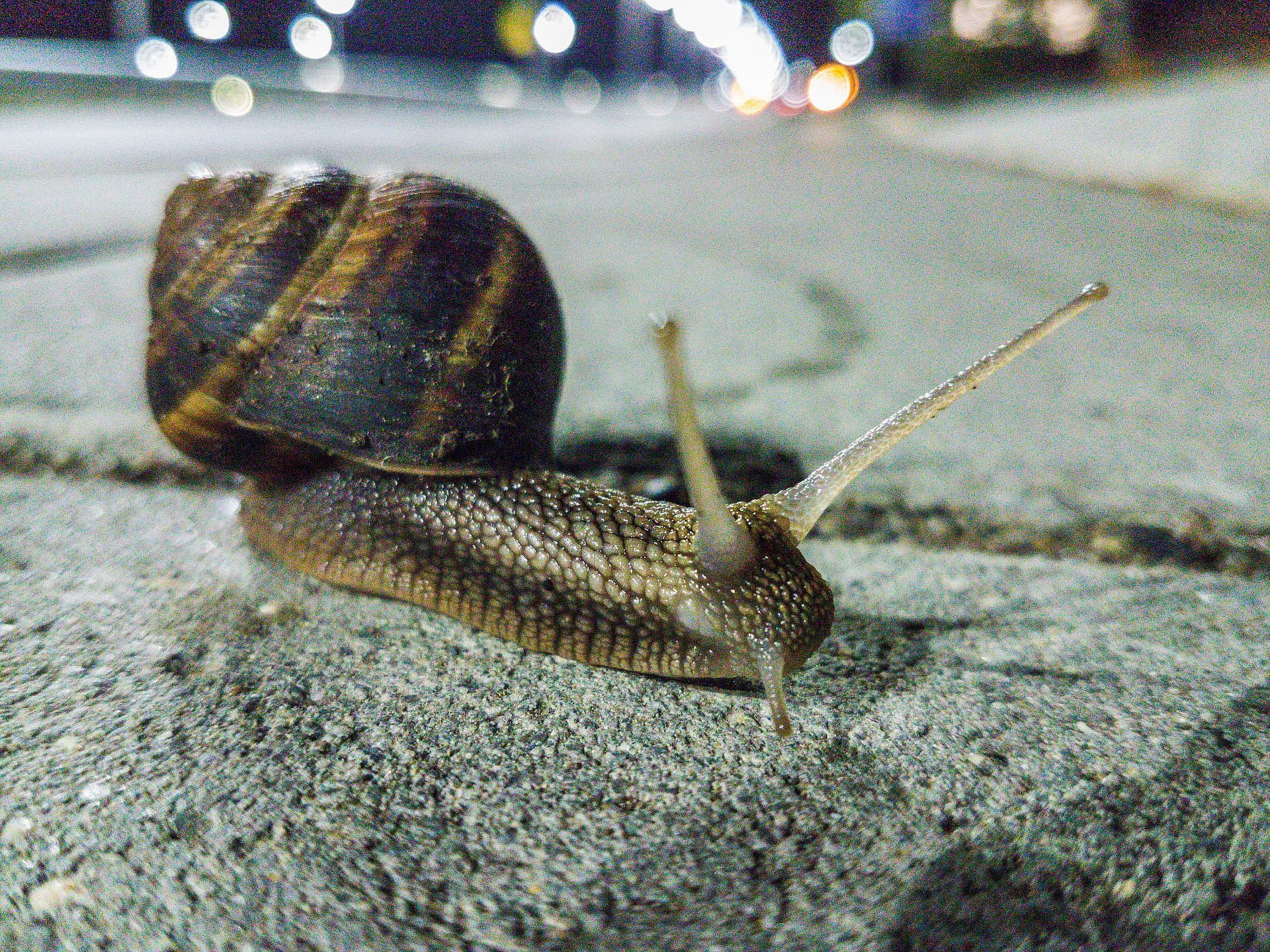I've just got my hands on a brand new Galaxy S7, which outputs DNG RAW files. Which is the best mainstream RAW converter?
The Galaxy S7's camera resolution was reduced from 16MP (Galaxy S6) to 12MP. The photosensitive elements are now bigger (hence occupy more space and reduce the total resolution), but because of their increased area, they should capture much better images at night. Consider this a combo review - the following three test shots were taken at midnight, when all the party animals go out. My subject was a drunk snail, swerving left and right, obviously driving under the influence.
I was surprised that at a focal length of 4.17mm, I've managed to create such a shallow depth of field. But then again, the S7's crop factor is around 6.4x, effectively creating a 27mm lens (35mm equivalent), and I was shooting right at this little guy's face. All images are shot at f/1.7, ISO was between 640 and 1000.
You can click any of the following shots for a bigger 1920x1440px image. The images are as follows:
- Image processed by the Galaxy S7's internal JPEG converter.
- Image processed from the RAW DNG file in Lightroom (PC).
- Image processed from the RAW DNG file in Lightroom (Mobile app).
- Image processed from the RAW DNG file in Snapseed (Google's RAW editor).
I've edited all images (excluding the stock JPEG image, which is straight out of the S7's camera) in what I consider the best way possible (i.e. absolutely subjective), according to what I was seeing both on my PC's monitor and on my S7's screen, and in accordance with the available image manipulation options in each software application.
Download the 1st Google S7 DNG RAW File.
Stock Galaxy S7 Image Processor
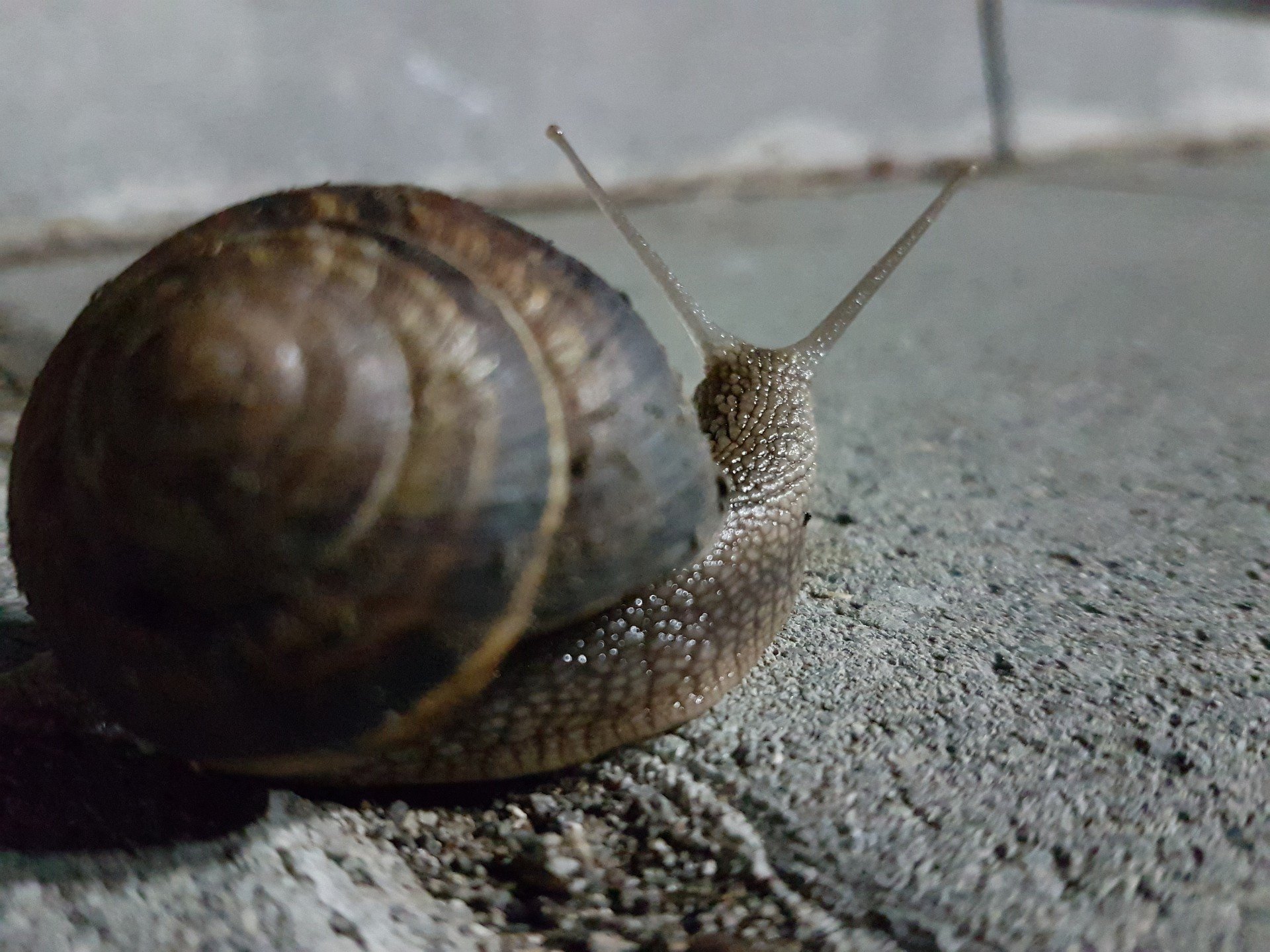
Download the 2nd Google S7 DNG RAW File.
Stock Galaxy S7 Image Processor
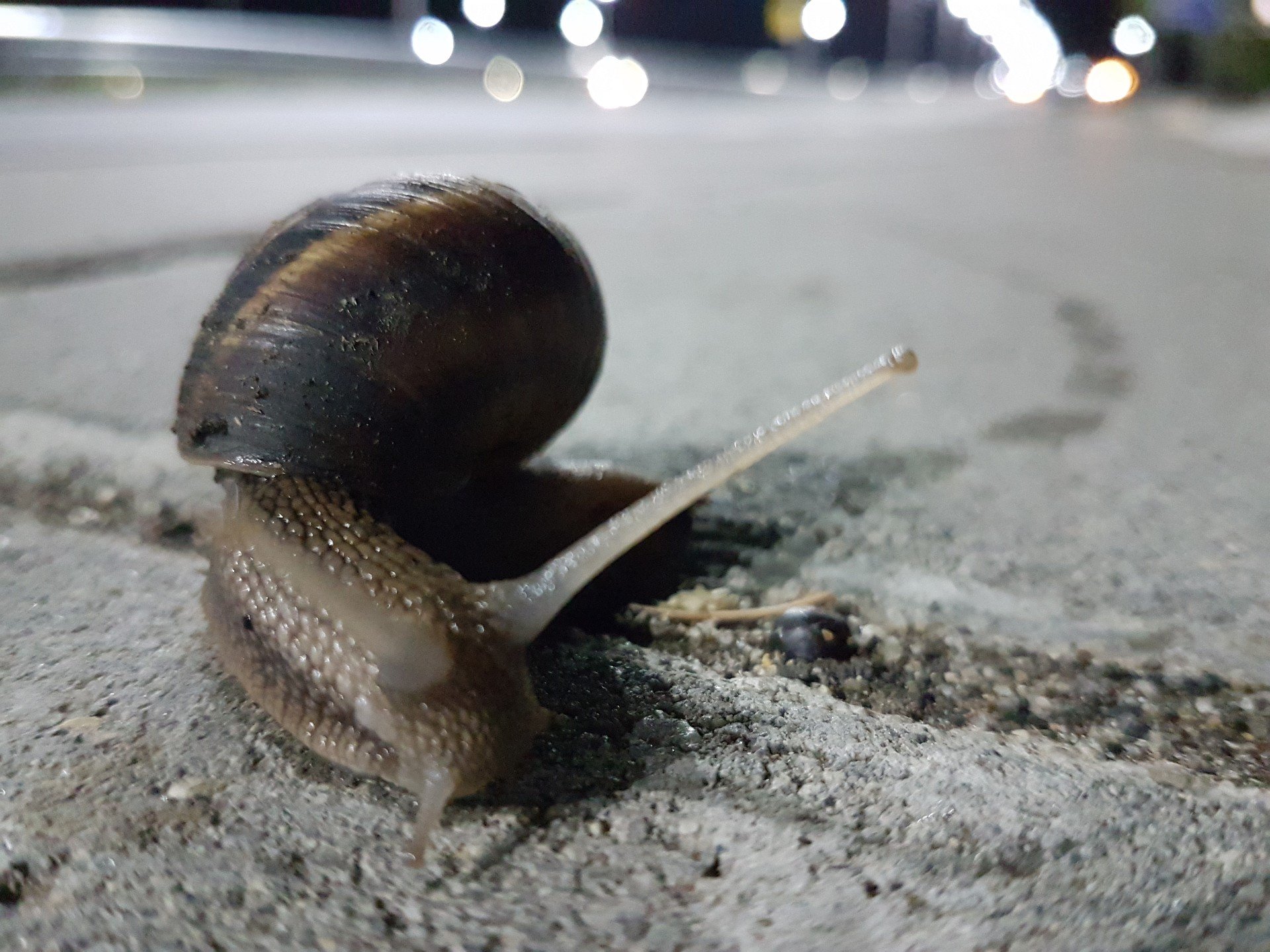
Download the 3rd Google S7 DNG RAW File.
Stock Galaxy S7 Image Processor
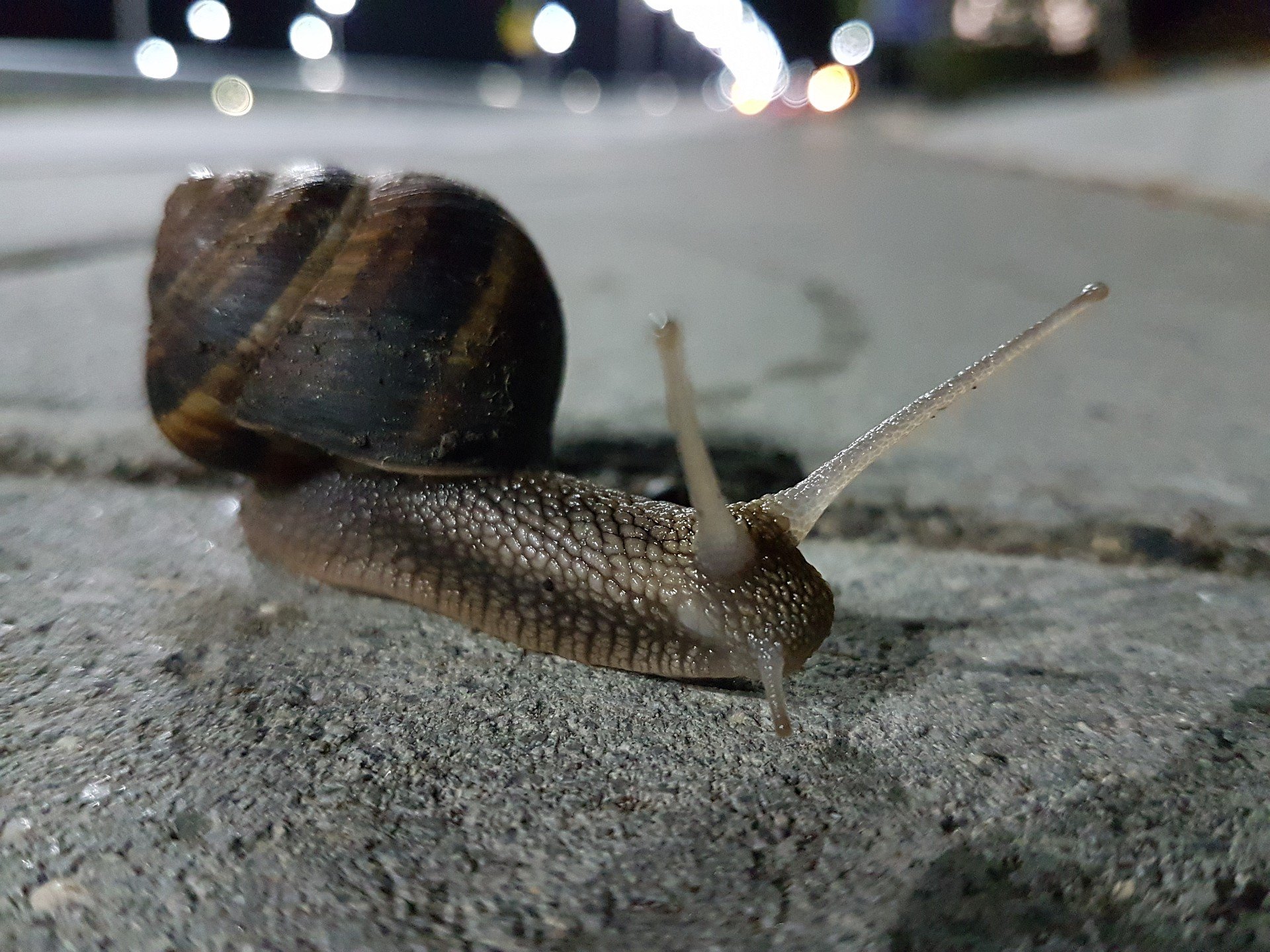
Conclusion.
- Samsung Galaxy S7's JPEG image conversion is a bit on the dark side with considerably more aggressive noise reduction than the other applications.
- Adobe Lightroom (PC) provides the best RAW image processing, managing to provide both good sharpness and noise reduction, without butchering the already noisy image. It has, however, the highest system requirements of all applications, and most photographers are very much aware how sluggish it is, even on top end hardware.
- Adobe Lightroom (Mobile) has more tweaks than Google's Snapseed, but seems to have problems dealing with noise after applying saturation and clarity. It also had the occasional freeze, even on S7's latest generation CPU and 4 GB of RAM.
- Google's Snapseed (Mobile) offers less tweaking options, but has the fastest and most intuitive interface. It seems to handle clarity much better than Adobe's mobile solution, managing to produce sharper images. They are just as noisy, but at least the noise is not as saturated, as we saw in Adobe's mobile application.
I hope you enjoyed this review! In the future, I may also include Corel's AfterShot sotware, which I often use under Linux. Upvotes and resteems are much welcome. Thank you!
Check out my latest articles:
- DEK Photography: Last Week's Photos in a Single Post!
- DEK Photography: The Soul of the City - SteemitPhotoChallenge Entry #12
- DEK Photography: Follow the Leader
I offer Professional Translation and Editing Services in exchange for Steem.

